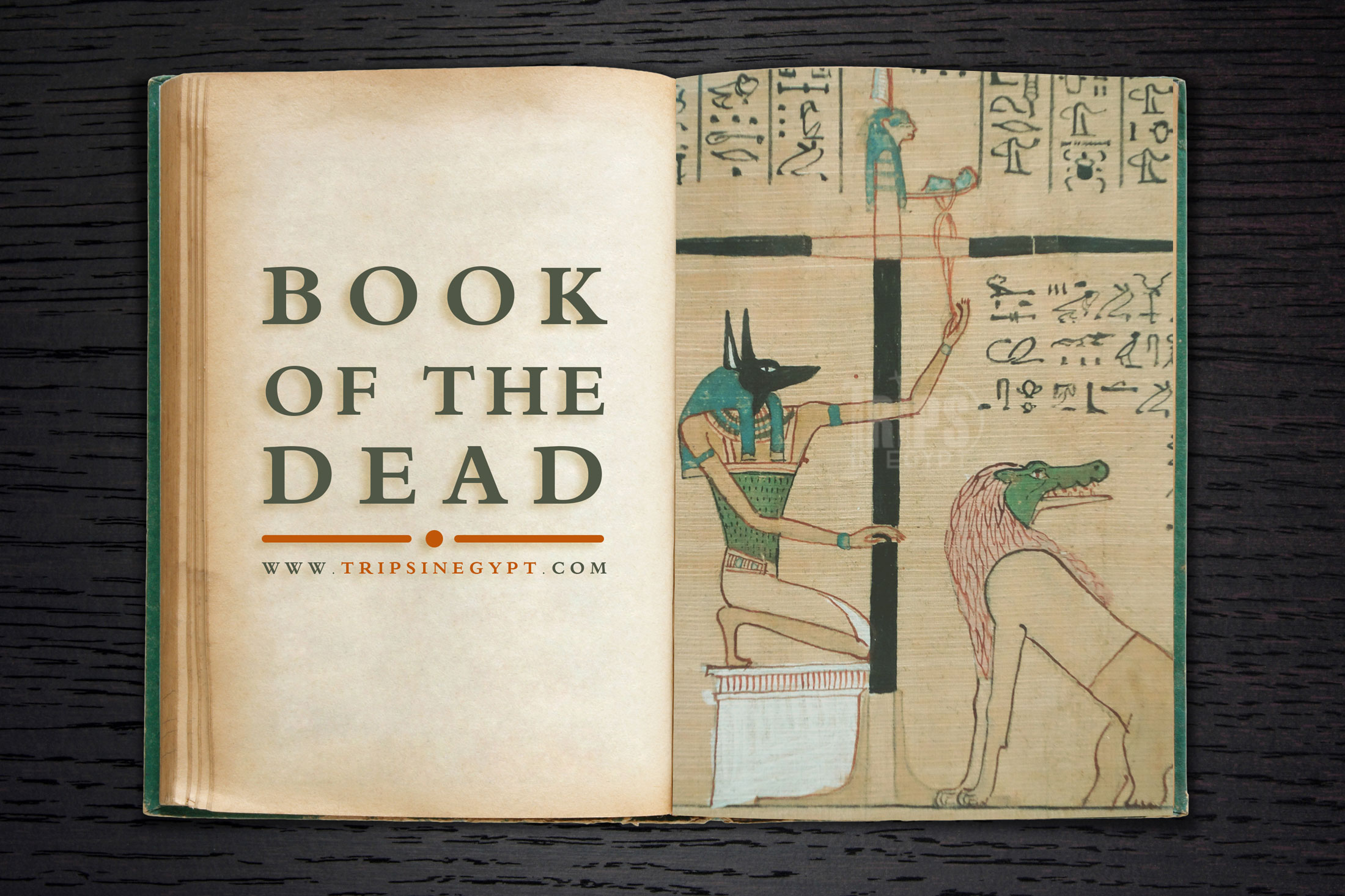
The Egyptian Book of the Dead
The Book of the Dead is an unbelievable world of exploration of the funerary texts and spells that were used by the ancient Egyptians to ensure a safe journey for the deceased after death to get to the afterlife. The Book of Dead was a collection of rules that contains spells and hymns, which were intended to guide the deceased to protect them from any dangers that may have been encountered along the way as you need magical help to arrive safely. The Book of the Dead includes information about the process of preserving the body and mummification, plus, spells to protect the deceased from the dangers of the underworld itself, such as the Gods of the underworld, the judge of the afterlife, monsters, and demons, along the journey of the soul to the body once again.
The book of the Dead contains many versions of the afterlife, such as the Field of Reeds which explains that death is not the end, but it will be a beginning of a new life, moreover, the Book of the Dead provides guidance to the living on how to ensure a safe passage for the deceased, and this includes rituals to the ancient Egyptian Gods & Goddesses. The Book of the Dead is an important source of great information on ancient Egyptian culture and beliefs, and it provides an invaluable window into the afterlife and the religious beliefs of the ancient Egyptian people. Our article will provide you with a scientific edifice in ancient Egyptian life to learn more about this unique culture, religions, thoughts, traditions, and much to know about their lives.

The Development of the Book of the Dead
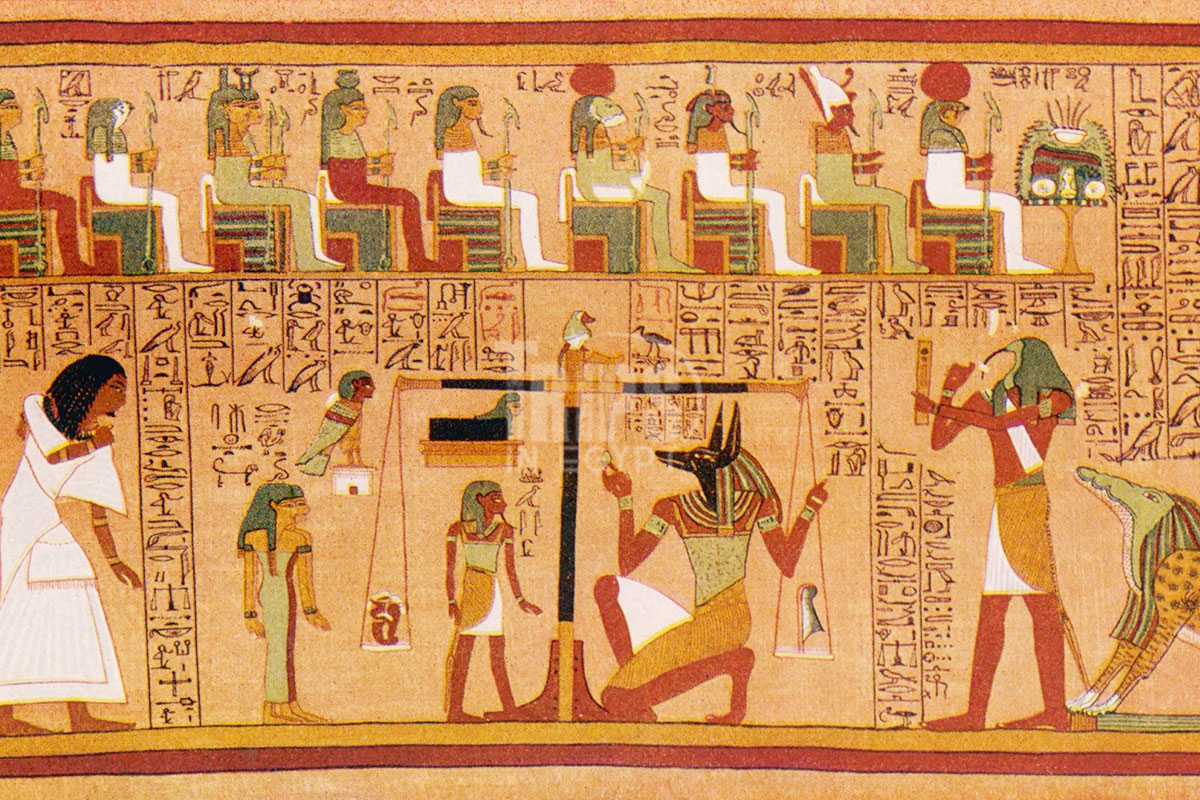
The Book of the Dead was an ancient Egyptian funerary text that was gathered during the New Kingdom (1550 BC). The texts and spells were often inscribed on the inside of a sarcophagus or a tomb wall and contained spells to help the deceased pass through the underworld and reach the afterlife. The Book of the Dead was believed to give the deceased power to overcome obstacles such as monsters, lakes, rivers, and other dangerous places in the Underworld. It contained over a hundred and eighty spells and was written in the hieratic script of hieroglyphic writing. The Book of the Dead was a source of knowledge and guidance in the afterlife and was used by ancient Egyptians for centuries.
- Book of the Dead During The Old Kingdom of Egypt
The Book of the Dead dates to the old kingdom of Egypt as they used texts inside the Pyramids. The first use of it was inside the Pyramid of King Unas who ruled Egypt in the fifth dynasty around (2400 BC). The texts which they found inside the Pyramids were on the walls of the pyramid to help king Unas to take a place among the Gods and Goddesses in the afterlife, as they believe that the next life will be in the sky.
- Book of the Dead During The Middle Kingdom of Egypt
The ancient Egyptians developed the texts in the middle kingdom of Egypt as they replaced the text inside the Pyramids to be on the coffin of the deceased with a new language and new spells. The spells and texts were written on the inner surface of the coffin of the deceased people. First, the wealthy Egyptians use this way only, but later the number of Egyptian people increased to use this way to share in the afterlife like wealthy people and kings.
- Book of the Dead During The New Kingdom of Egypt
The Book of the Dead was developed in the new and last kingdom of ancient Egypt as they used new texts and new spells but not on the walls of the Egyptian Pyramids or the coffin but on the papyrus scroll. There was a famous spell that is considered one of the most important spells in the region of Queen Hatshepsut, and Thutmose III in 1475 BC "Spell 125" which we will illustrate later.

An Explanation of Dates of the Book of the Dead
| 3150 BC | Texts were preserved on small labels on the tomb of a King at Abydos. |
| 3000 BC | The start of the dynasties of kings in ancient Egypt. |
| 2345 BC | The First Pyramid of King Unas contains texts on the wall of the Pyramid. |
| 2100 BC | First texts and spells on the coffins in ancient Egypt. |
| 1600 BC | Spells and texts on the coffin of Queen Menthuhotep. |
| 1550 BC | Spells on Papyrus, and the beginning of the New Kingdom. The first time to write spells on Papyrus instead of walls of the Pyramids and coffins. |
| 600 BC | This date belongs to an important event when the spells became standard. |
| 553 BC to 42 CE | Christianity spread to Egypt, and there were texts on the last temple at Philae. |
| The Second Century CE | This era witnessed the last copies of the Book of the Dead, but it was not good enough as it was poorly documented. |
| 1798 CE | Vivant Denon received a copy of the Book of the Dead, during Napoleon’s rule in Egypt. |
| 1805 CE | Jean Marcel published the first copy of the Book of the Dead. |
| 1822 CE | Jean Champollion announced that he has the key to the "Hieroglyphic' writing of ancient Egyptian civilization. |
| 1842 CE | Lepsius has begun the numbering of the spells of the Dead and published the first essential study of the Book. |

The Significance of the Book of the Dead
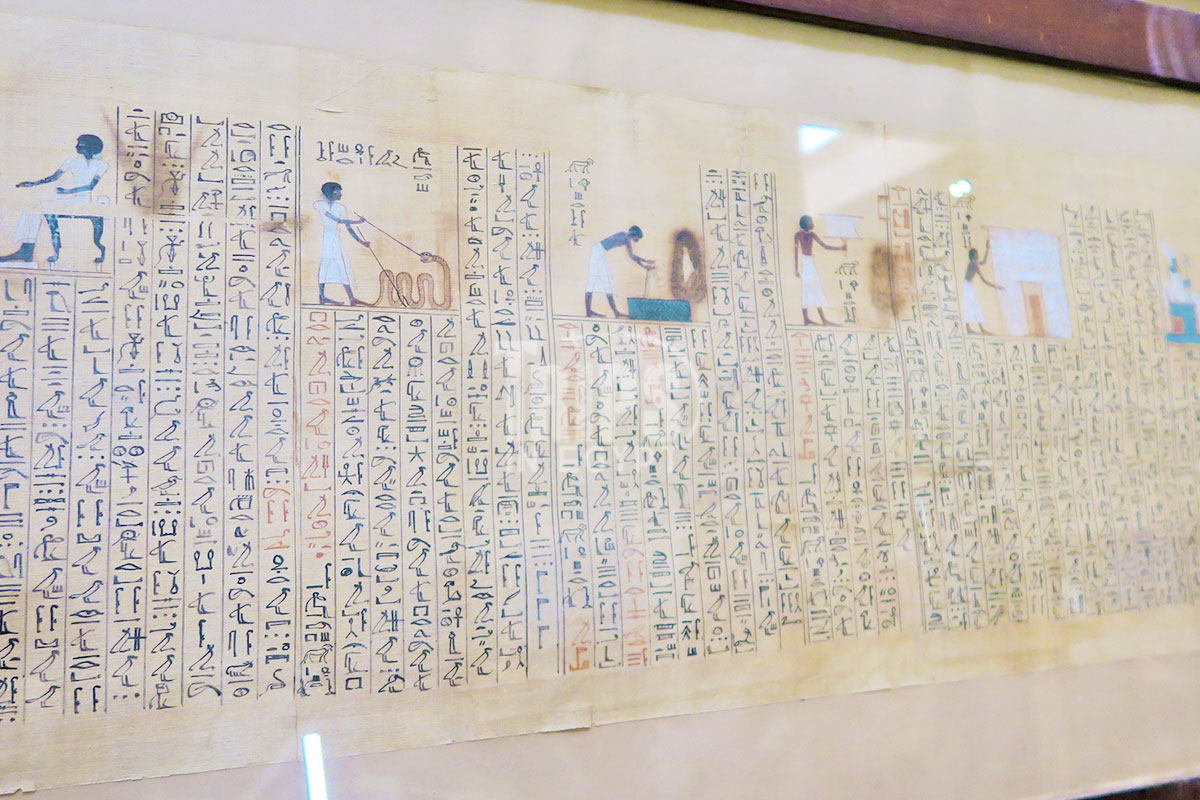
The Book of the Dead was an ancient Egyptian guide made of spells and magic. The main purpose of the book was meant to assist the deceased in their journey into the afterlife and provide guidance on their path to arrive safely to heaven. It included spells, hymns, and other instructions to help the deceased in the underworld and overcome obstacles.
It was believed to help assure the deceased a successful journey to the afterlife. The Book of the Dead also provided comfort to the living, as it was guiding them on how to properly honor the deceased. As such, it was an important source of knowledge on ancient Egyptian beliefs and culture as it offers many rules that you must follow through your life as you will have an oath after death to say the truth and you did not such bad behaviors such as:
- I have not stolen.
- I have not been violent.
- I have not done wrong.
- I have not destroyed the food offerings.
- I have not told lies.
- I have not reduced the measures.
- I have not stolen the property of the Gods.
- I have not discussed secrets.
- I have not had intercourse with a married woman.
- I have not disputed the King.
- I have not caused (anyone) to weep.
- I have not robbed a parcel of land.
- I have not transgressed the Law.
- I have not struck terror.
- I have not waded in the water.
The Book of the Dead helped the ancient Egyptian to improve their morals for the afterlife where there is God Osiris, the God of the underworld, who judges people and decides your destiny whether you are worth heaven or you will not have a next life with whom you love and you will be doomed to oblivion.

The Main Sections of the Book of the Dead
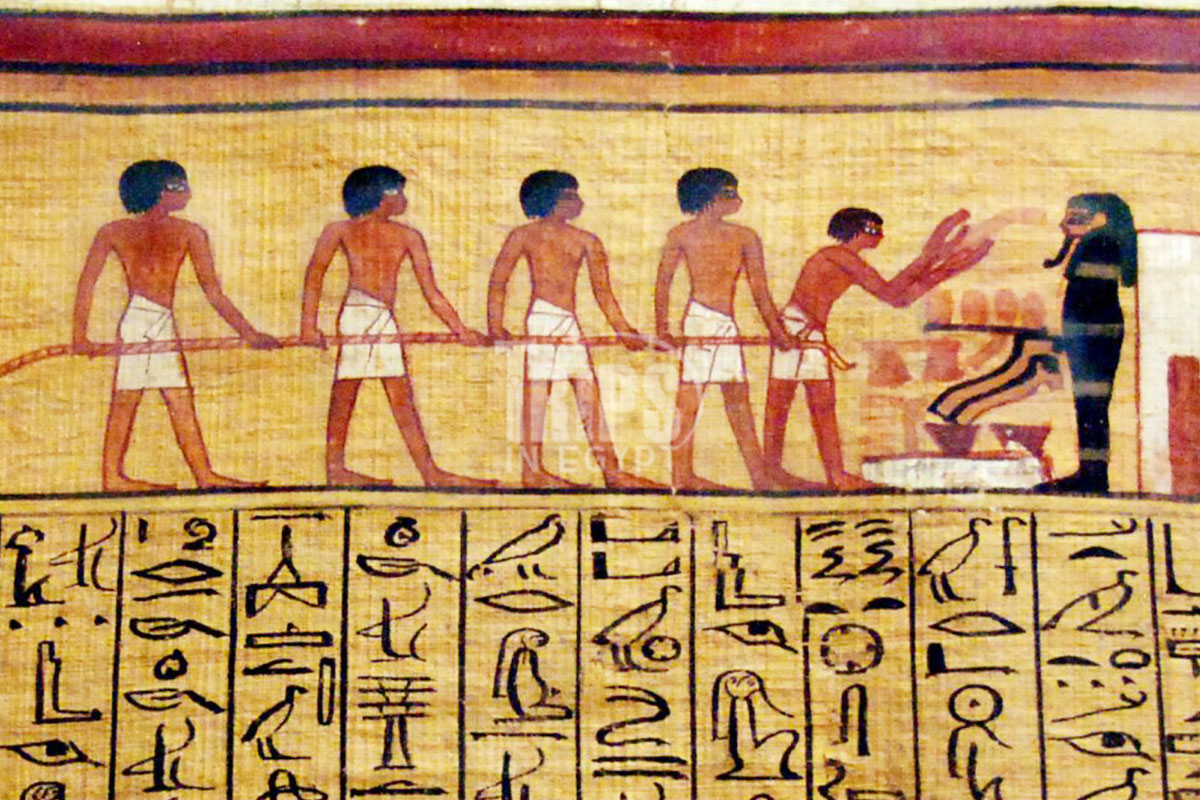
Since they had found the book of the Dead in the tombs, without understanding what are these texts and its translation, it was believed that the Book of the Dead is equivalent to the Quran and the Bible.
- In 1875, the scientist "Karl Richard Lepsius" started his first try to translate about hundred and eighty-six and finished this great mission in 1886.
- In 1876, "Samuel Birch" published the first English translation version which contains a photographic copy of Nebseny’s Papyrus.
- In 2023, it was announced by the Ministry of Antiquities that they found sections of the Book of the Dead in a coffin near the Pyramid of Khufu.
Ancient Egyptians divided the Book of the Dead into four sections:
Chapters 1-16:
- The deceased go to his tomb.
- The soul passes into the Duat "A place where souls and bodies do to be judged".
- The soul returns to the body, so he could speak and move once again.
Chapters 17-67
- The myths explain the origins of Goddesses and Gods.
- It also describes the places in the Duat.
- It helps the dead of the deceased to be reborn and live again.
Chapters 68-129
- The soul of the dead travel to the sky in the boat as a blessed deceased.
- Souls travel with God Osiris at sunset.
Chapters 130-189
- It describes how the deceased become a God after his vindication before the Goddesses and Gods.
- Details about the food that the deceased needs.
- Information about the places that the deceased will go on.

The Translation of Some Spells in the Book of the Dead
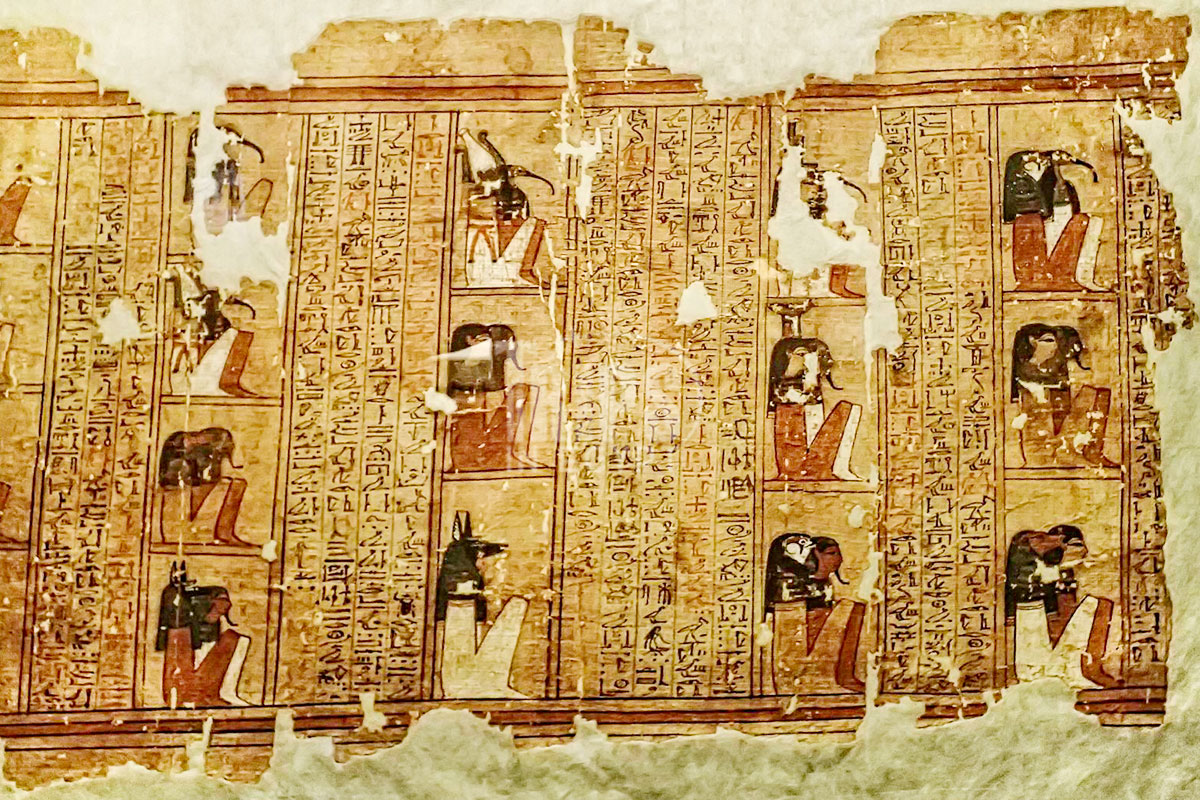
Chapters 1-16:
1. for the day of burial. Often accompanied by a lavish vignette showing a funerary procession.
1B. Recitation for the day of burial.
7. Protection from animals
9. Identifies the owner with the God Horus, son of Osiris; affirms that Osiris will triumph over his enemy Seth, and asks for the gods to open a path for him. In the Papyrus of Ani, this spell reads:
"Words spoken by Ani: 'O you Soul [ba], greatly majestic, behold, I have come that I may see you; I open the Netherworld that I may see my father Osiris and drive away the darkness, for I am beloved of him. I have come that I may see my father Osiris and that I may cut out the heart of Seth who has harmed my father Osiris. I have opened up every path which is in the sky and on earth, for I am the well-beloved son of my father Osiris. I am noble, I am a spirit [akh], I am equipped; O all you gods and all you spirits [akhu], prepare a path for me"
Chapters 17-67:
26. Helped to preserve the dead person's heart, and the heart's role in re-unifying the dead person's body and soul. It is sometimes illustrated with a vignette showing the God Anubis handing the deceased their own heart.
29A. Guarding against the loss of the heart.
29B. Guarding against the loss of the heart, utilizing a heart amulet. This spell is found in manuscripts and also inscribed on heart-shaped amulets buried with the dead. Reads "I am the Benu, the soul of Ra, who guides gods to the Netherworld when they go forth. The souls on earth will do what they desire, and the soul of [the deceased] will go forth at his desire".
42. Served the same purpose as 41 but also contains a list of all the essential parts of the body and their divine parallels.
My hair is Nu; my face is Ra; my eyes are Hathor; my ears are Wepwawet; my nose is She who presides over her lotus leaf; my lips are Anubis; my molars are Selkis; my incisors are Isis the goddess; my arms are the Ram, the Lord of Mendes; my breast is Neith, Lady of Sais; my back is Seth; my phallus is Osiris; my muscles are the Lords of Kheraha; my chest is he who is greatly majestic; my belly and my spine are Sekhmet; my buttocks are the Eye of Horus; my thighs and my calves are Nut; my feet are Ptah; my toes are living falcons; there is no member of mine devoid of a god, and Thoth is the protection of all my flesh.
43. Prevents decapitation in the afterlife and identifies the deceased with Osiris. "I am a flame, the son of a flame, to whom was given his head after it had been cut off. The head of Osiris shall not be taken from him, and my head shall not be taken from me."
59. Giving the deceased the power to breathe in air and to have power over water. It is addressed to the sycomore fig tree, a symbol of the sky-goddess Nut, and reads:
'O you sycomore of the sky, may there be given to me the air which is in it, for I am he who sought out that throne in the midst of Wenu [Hermopolis]. I have guarded this egg of the Great Cackler. If it grows, I grow; if it lives, I live; if it breathes air, I breathe air.
63A. 'For drinking water and not being burnt by fire.
63B. prevents the owner from being scalded.
Chapters 68-129:
68. For 'coming forth by day' and ensuring power. Part reads:
May I have power in my heart, may I have power in my arms, may I have power in my legs, may I have power in my mouth, may I have power in all my members may I have power over invocation-offerings, may I have power over water ... air ... the waters ... streams ... riparian lands ... men who would harm me ... women who would harm me in the realm of the dead ... those who would give orders to harm me upon the earth.
89. Allowed the ba-spirit of the deceased to rejoin the deceased. Typically a vignette shows the ba, represented as a bird with a human head, flying over a mummy. Reads:
Come for my soul, O you wardens of the sky! If you delay letting my soul see my corpse, you will find the eye of Horus standing up thus against you ... The sacred Barque will be joyful and the great god will proceed in peace when you allow this soul of mine to ascend vindicated to the gods... May it see my corpse, may it rest on my mummy, which will never be destroyed or perish.
112. Names of the souls of sacred locations in Egypt; Pe, Nekhen, and Heliopolis.
125. This spell describes the Weighing of the judgment ritual. The deceased is led by Anubis into the presence of Osiris, and there makes a 'negative confession', saying that he is innocent of a list of 42 crimes, in front of 42 judges. His heart is then weighed against a feather, representing truth, justice, and the goddess Maat. If he is innocent, he is led to Osiris; a demon called Ammut, the Devourer, stands by to eat the heart of the guilty.
127. 'Worshipping the gods of the caverns'; instructions on how to deal with supernatural entities whom the deceased had to pass on his way. Part reads: "O you door-keepers who guard your portals, who swallow souls and who gulp down the corpses of the dead who pass you by when they are allotted to the House of Destruction... May you guide [the deceased], may you open the portals for him, may the earth open its caverns to him, and may you make him triumphant over his enemies"
Chapters 130-189:
144. Lists the names of the creatures serving as keepers, guards, and announcers at each of the seven gates. Their names are fairly terrifying, for instance, "He who lives on snakes", or "Hippopotamus-faced, raging of power". By knowing these gates, the deceased can persuade them to let him through. To the guardians the deceased says:
"O you gates, you who keep the gates because of Osiris, O you who guard them and who report the affairs of the Two Lands to Osiris every day; I know you and I know your names"
151. Regarding the protection of the deceased in their tomb. This spell consists of a very large illustration, made up of several smaller images and texts, many of which derive from the older Coffin texts. The purpose of this spell is to collect together the magical aids which were required for burial, and also to perpetuate the protective funerary rituals. Some of these texts were also used on coffins, or on mud bricks placed in niches in the walls of high-status funeral chambers.
153A and 153B both deal with the risk of being caught in a trap, a giant net that stretches between heaven and earth.
182. A rare spell titled 'Book for the permanence of Osiris, giving breath to the Inert One in the present of Thoth, and repelling the enemy of Osiris'. This spell invokes the power of Thoth to ensure the mummy of the deceased is protected by a large number of gods and spirits, who are similar in appearance to the fearsome guardians of the gates, caverns, and mounds mentioned in earlier spells.
185. A hymn to Osiris.

The Weighing of the Heart
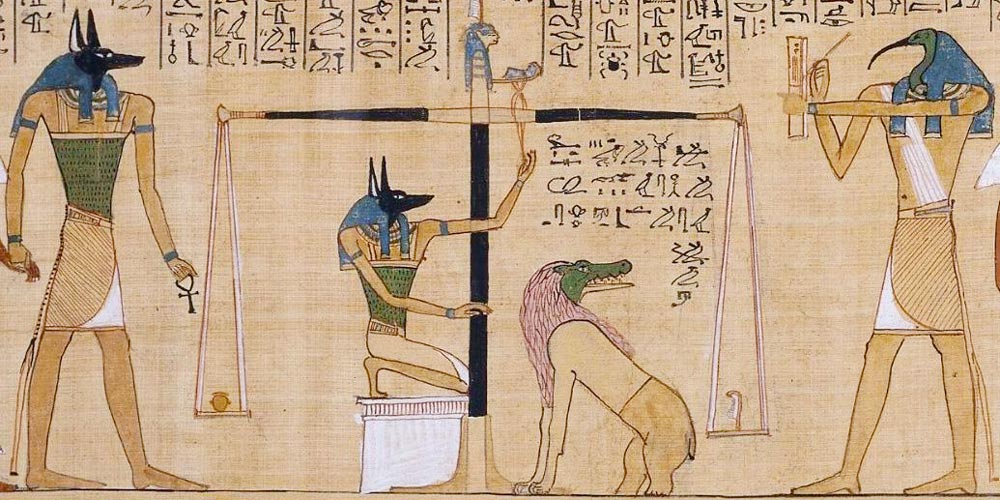
In Ancient Egypt, the heart of the person was believed to be the most important part of the body, as it is the source of good and bad deeds, and it knew exactly what the person feels and thinks. The weight of the heart was an important source in the afterlife, as it decided which path the deceased will take, heaven or to be nothing. This is why the Ancient Egyptians believed in the Weighing of the Heart, as the heart was weighed against a feather of Goddesses "Maat", the Goddess of law, truth, balance, and justice.
The God Anubis was the one that must weigh the heart of the deceased, the God "Thoth" must record the final results of the heart of the deceased, and the Goddesses "Ammut" who has a head of a crocodile, a part of a lion, and a part of hippo that eats the person if he made something wrong. If the heart of the person was as light as a feather or less than it, the person should move to the Heavenly Paradise "The Field of Reeds, a place full of joy and happiness where they will meet whom they love. If the heart was heavier than the feather, then the person would be stuck in the Underworld, eaten by the Goddess "Ammut" and will be doomed to oblivion forever.

The Role of the Book of the Dead in Ancient Egyptian Religion
- The Ancient Egyptians wanted to do good deeds in order not to disappear.
- The Ancient Egyptians has a main goal in their life "To be good enough so the heart would be light".
- The Ancient Egyptians did not want to hurt someone, lie, or make something wrong to not disappear.
- Goddess "Ammut" was responsible to eat the person if he made something wrong.
- Goddesses "Maat" was the symbol of justice and judgment. Her main goal is witnessing the process of "Weighing of the Heart.
- God "Anubis" is responsible to take the person who makes something bad to the underworld to be eaten.
- The heart is the most important part of the whole body of the person. The Ancient Egyptians could not remove this part when someone die, as he could not go to the afterlife, so they kept it inside the body.
- If the weight of the heart is equal to the feather of less than it so, the deceased will go to heaven.
- If the weight of the heart is heavier than the feather, so the deceased will be eaten and never get back to life again.
- The ancient Egyptians called heaven "Aaru" or the field of Reeds, which rules by God "Osiris"
- God "Osiris" or "The God of the Dead" his major mission is to focus on the weighing of the Heart.

The Role of Women in the Book of the Dead
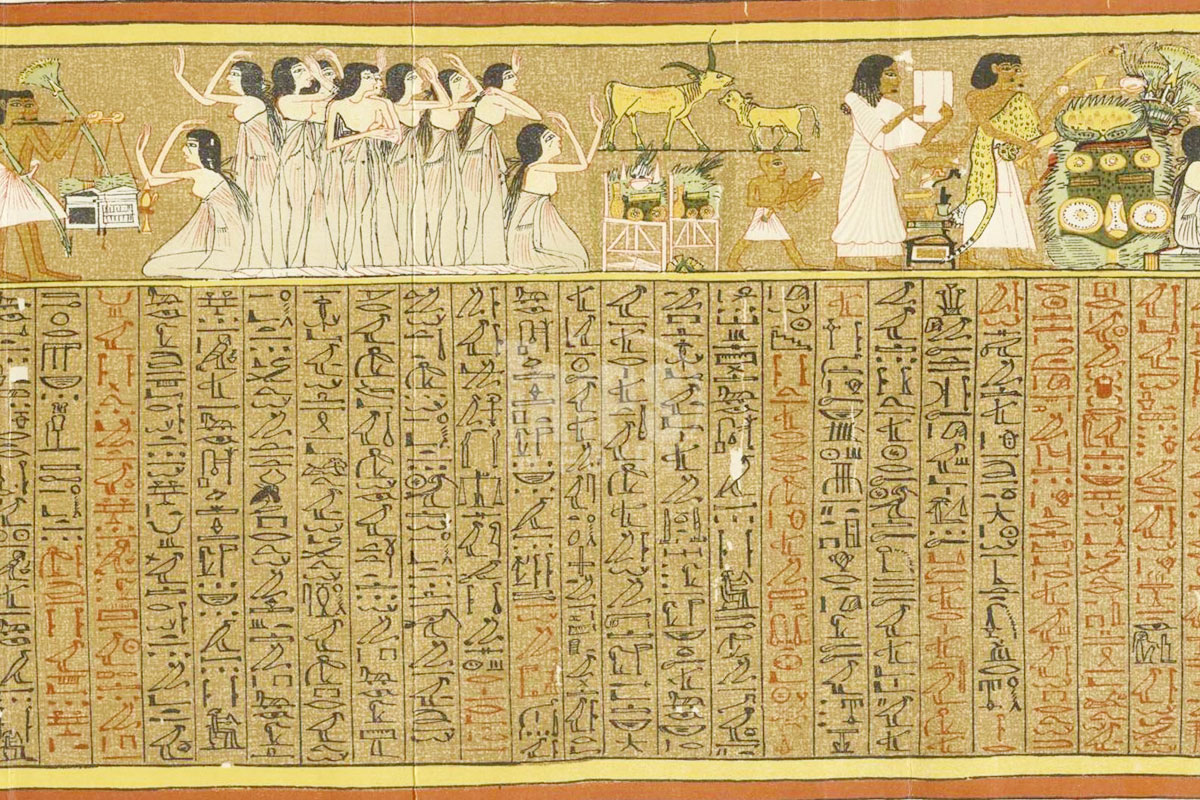
Maat is an ancient Egyptian Goddess who symbolized truth, law, justice, balance, and order. Goddess "Maat" was usually wearing a feather on her head, which symbolized truth and justice, and judgment. We can see paintings of the Goddesses in tombs and temples. The great Goddesses were referred to as the "Daughter of God Ra", the God of the sun, and the wife of God "Thoth" who is the God of wisdom. Goddesses Maat served as a guide to Egyptian people and was believed to bring peace and balance to the world.

The Art and Illustrations of the Book of the Dead
The Book of the Dead contains a collection of spells and texts to help the deceased soul into the afterlife, different images of Gods and Goddesses of ancient Egypt, as well as detailed descriptions of the deceased through his journey to heaven.
The art found within the Book of the Dead was used to decorate the funerary to explain the transition of the soul to the afterlife. This art was often brightly colored and featured vibrant depictions of Gods, Goddesses, and the Gods of the underworld, and contains also hieroglyphics, symbols, and protections for the deceased from the monsters, and another being to arrive safely to the afterlife.
The ancient Egyptians used black and red colors in writing the Book, they used the black color generally, and however, they used red ink to highlight the titles of the spells, names of dangerous creatures, opening, and closing of the spells. The style of the Book was amazing, as they used lavish color illustrations.
The texts and spells were written in horizontal lines from left to right or vice versa. The text was written in Cursive Hieroglyphs and it was in columns that were curved on monuments, pyramids, tombs, or coffins.

Conclusion
To come to the point, the Book of the Dead served as an important mission in ancient Egypt, as it provided unbelievable support to the deceased in their journey to the afterlife, and how to overcome their struggles. The book of the Dead contains spells and texts that were meant to protect the deceased from harm and ensure a safe passage to the other side to arrive at the heavenly paradise safely.
The Book of the Dead is a piece of powerful evidence today, offering spiritual enlightenment and insight into ancient Egyptian culture. The Book has ancient wisdom that still speaks to the whole world today, reminding us of the fragility of life and the value of living each day, and we have a main goal in our life which is "to prove our good side to arrive to heaven safely".
Trips In Egypt offers various Egypt tours and Nile cruises that provide visits to many attractions which include visiting the pyramids, tombs, and temples in order to witness this greatness. So don't wait! It is your turn now to contact our operation department now, so we can arrange this tour, and make it your most unforgettable one yet!
Great vacation for 4 days in Cairo Egypt accompanied by an e...
Duration
4 Days / 3 Nights
Availability
Everyday
An Incredible 5 days Cairo & Alexandria tour package to expl...
Duration
5 Days / 4 Nights
Availability
Everyday
Explore Egypt's ancient wonders on a 6 days vacation to Cair...
Duration
6 Days / 5 Nights
Availability
Everyday
Breathtaking 7 days Cairo, Luxor & Hurghada holiday to explo...
Duration
7 Days / 6 Nights
Availability
Everyday
FAQ
What Should I Wear While Being in Egypt?
You should wear whatever you want. It is advised to wear something light from cotton or linen, comfortable and put on sunblock during your time in Egypt in the summer and wear comfortable footwear like a closed-toe shoe to sustain the sandy terrain.
What to Pack for Your Egypt Tour?
You should bring a brimmed hat and sunglasses if you not used to the Egyptian sun &pack everything you could ever need and put in a small bag so you could move easily between your destinations.
Are All Nile Cruises Available at Any Time?
Yes, it is available all years. as the Nile from Aswan to Luxor takes three to four days of sailing on Monday, Wednesday and Friday for the total cost of 600$ and the Nile cruise from Luxor to Aswan take four to five days in Saturday, Monday and Thursday for the coast of 650$.
Why book Trips in Egypt?
We have experience in vacation planning for more than 10 years & our staff consists of the most professional operators, guides and drivers who dedicate all of their time & effort create the perfect vacation. All of our tours are customized by Travel, Financial & Time advisors to fit your every possible need during your time in egypt. we always keep in mind that your safety & comfort are our main priority until you return home.
Is it safe to travel to Egypt?
Yes, it is absolutely safe to travel to egypt, You will feel secure in Egypt as the current atmosphere of the country is very peaceful after the government took powerful measures like restructuring the entire tourist police to include all the important and tourist attractions in Egypt and construct an entire environment dedicated for ensuring the lives of all tourists.
What are Egypt's Visa Requirements?
They are very simples, If you want to apply for a Visa On Arrival that lasts for 30 days then you should be one of the eligible countries(check the link), have a valid passport with at least 6 months remaining and pay 25$ USD entry fee in cash. As for the E-Visa for 30 days, you should have a valid passport for at least 8 months, complete the online application, pay the e-visa fee then print the e-visa to later be presented to the airport border guard. You could be one of the countries eligible for a free visa for 90 days.
What is the Weather is Like?
The temperature of Egypt ranges from 37c to 14 c, Summer in Egypt is somehow hot and winter is cool and mild but sometimes it becomes cold at night. The average of low temperatures vary from 9.5 ¡ÆC in the wintertime to 23 ¡ÆC in the summertime and average high temperatures vary from 17 ¡ÆC in the wintertime to 32 ¡ÆC in the summertime while the temperature is moderate all along the coasts.
What is the Best Time of Visit Egypt?
It is known the best time to travel to Egypt is in the winter from September to April as the climate becomes a bit tropical, a warm atmosphere with a winter breeze. You will also be notified a week before your trip if the weather is unsafe or if any changes have been made.
Should I Give Tips in Egypt?
It is totally up to you, but if you choose to you can tip the servers at your restaurant 5-10% by handing it to them directly and 5 Egyptian Pounds as a general tip of anyone.
Can I Enter the Pyramids?
Yes, you can enter the pyramids for the small fee of 20$.
How to Enjoy Egypt During Ramadan?
Ramadan is a special time of year for Muslims that should be celebrated by non-Muslims and feel the essence of the Islamic culture. You can fast with the Muslim or just observe but you are always welcome to join the celebrations and festivals.

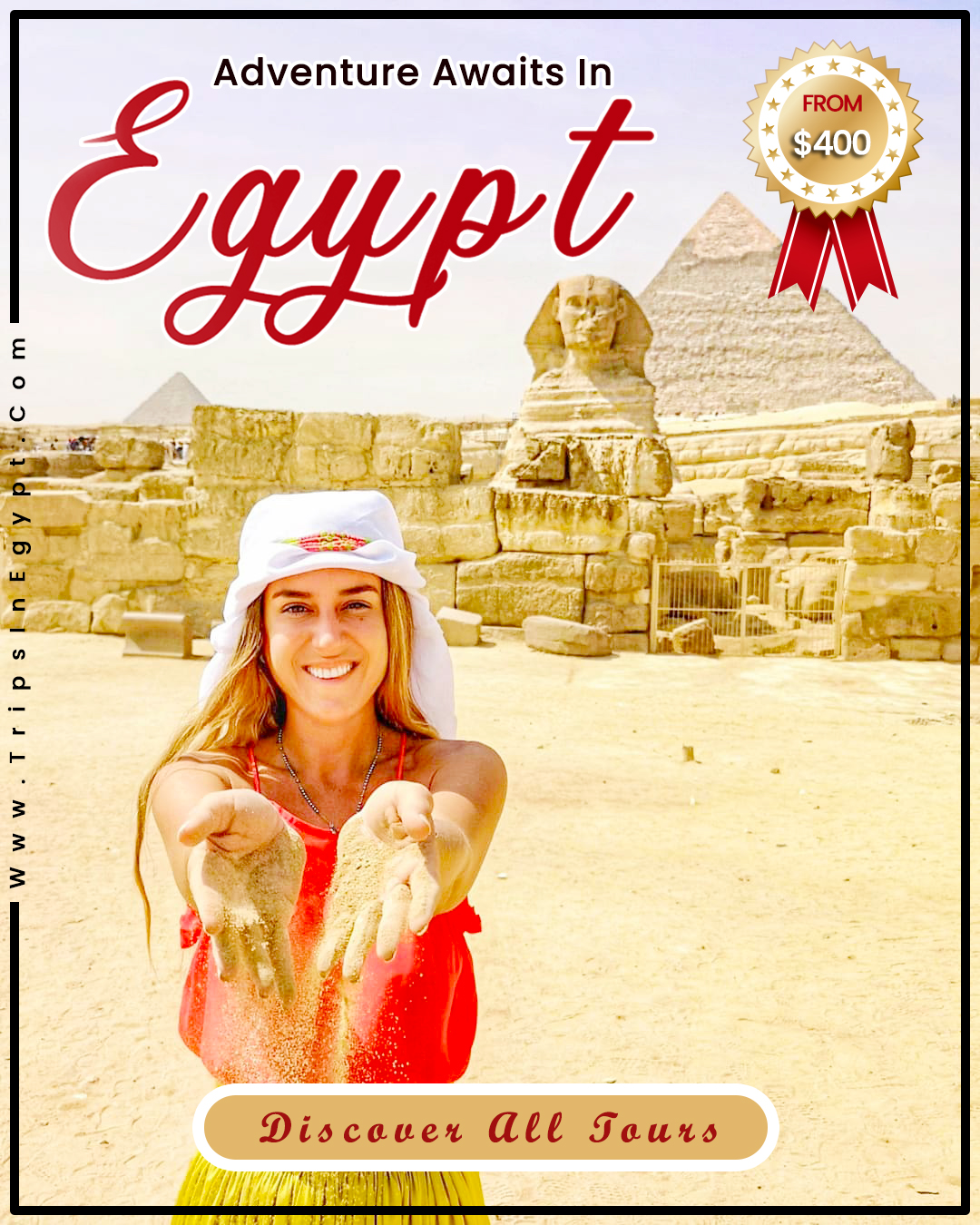
Share Your Comment